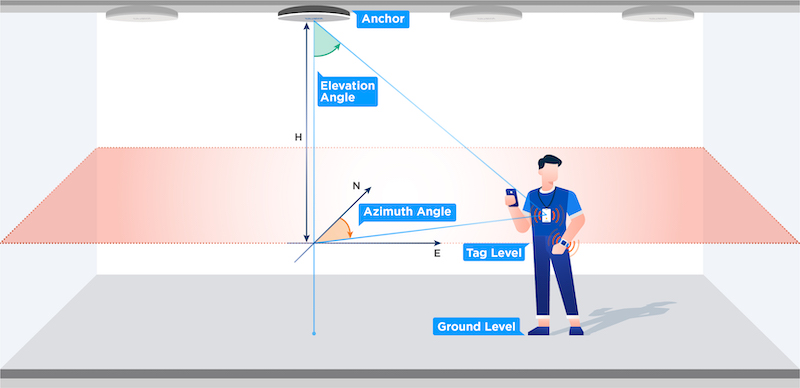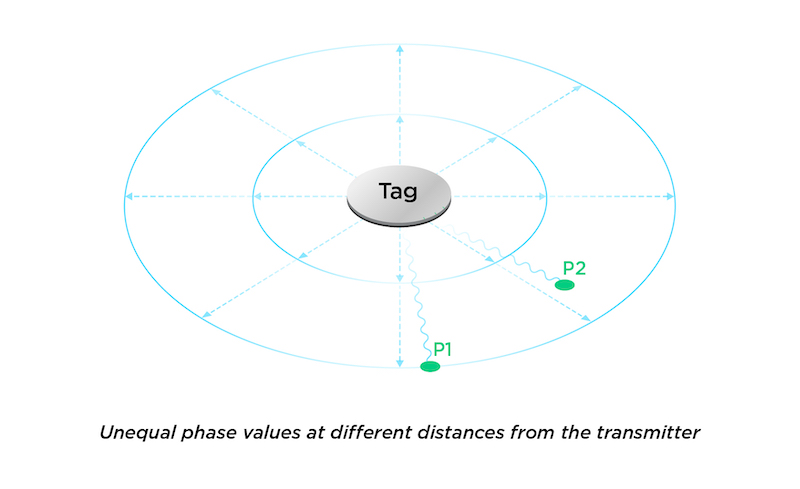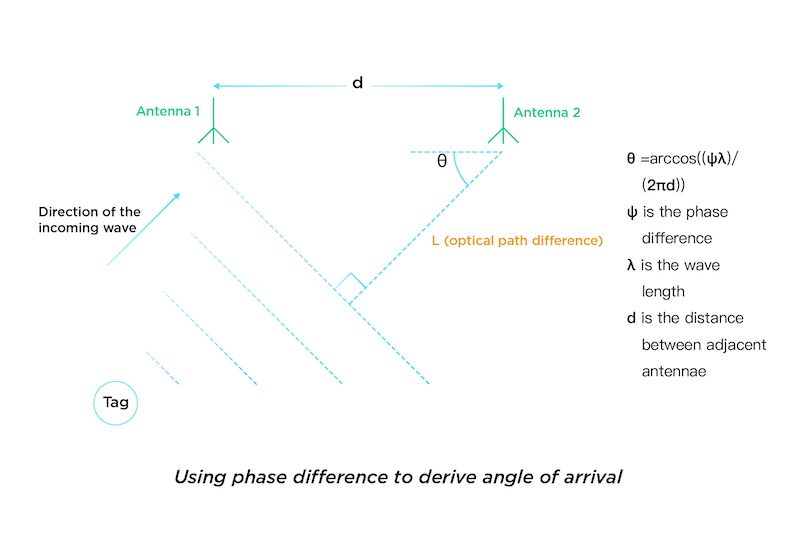How does Bluetooth transmit accurate location and what functions does it support?
By Blueiot
People spend 70+ percent of their daily life indoors. Indoor space become an essential environment for industry and academia to mine the value of location data. Therefore, an indoor positioning system (IPS) has generated significant attention due to its potential for diverse applications in a variety of industries.
IPS uses different criteria, one of which is the kind of signals used for locating, such as radio frequency signals, light, sound and magnetic fields.
Radio frequency signals are generally used for indoor positioning in popular communication protocols like Wi-Fi and Bluetooth. This article focuses on Bluetooth and illustrates how Bluetooth determine accurate location.
Bluetooth is a wireless communication technology in which digital information is embedded in radio frequency signals. It was initially intended to exchange data over short distances in accordance with the IEEE 802.15.1 standard.
In order to facilitate data synchronization between personal devices, this technology seeks to eliminate cables and connectors and facilitate the exchange of data between different types of devices.
In this way, how does Bluetooth transmit specific location data?
In fact, Bluetooth technology has been used for numerous location-based services for many years, including proximity solutions and positioning systems, which we often experience but not realizing them.
Proximity solutions include point of interest (PoI) information solutions, such as those used in museums to inform visitors about the objects in the space.
Additionally, the category covers tools for finding lost or forgotten objects, such as Bluetooth tags that assist in locating wallets, keys, and other items.
Proximity solutions leverage Bluetooth technology to determine the location of two devices relative to each other. For instance, museums use it to provide information about artifacts.
Positioning solutions utilize Bluetooth technology to determine the physical location of certain objects. The positioning accuracy experienced several improvements from meter level to 0.1-0.3m level. One of the reasons is Bluetooth 5.1 Direction Finding (DF), which is intended to improve location services.
What is Bluetooth direction finding, and how does it acquire an accurate position?
Bluetooth direction finding (BDF) is a standard feature in Bluetooth Core Specification v5.1 that enables devices to determine the direction of Bluetooth Low Energy (BLE) signal accurately.
In this version, an enhancement has been made to the controller so that specialized hardware that incorporates an array can be used to calculate the direction of a radio signal. Furthermore, the Host Controller Interface (HCI) has been modified so that direction calculations can be performed on the data acquired by the controller.
There are two distinct Bluetooth direction finding methods working under the same underlying basis. Blueiot technical specialist Wayne takes the AoA method as an example to introduce how Bluetooth direction finding technology works.
Blueiot AoA Positioning System adopts the Angle of Arrival (AoA) method. In this method, a transmitting device, such as an asset tag in a Real Time Locating System (RTLS) solution, uses a single antenna to transmit a special signal.
The receiving device, such as a fixed anchor, has multiple antennae arranged in an array. As the transmitted signal crosses the array, the receiving device collects data that enables it to calculate signal direction via elevation angle and azimuth angle.

When a tag emits a signal without impediment factors, it will spread in three dimensions at the speed of light. For simplicity’s sake, radio signals travel in circular paths that spread outward from a point like a stone thrown into a pool of water.
If two antennas are placed at the same distance to the tag, they will receive the emitted signal at a given time in the same phase value. However, if two antennas are placed at different distances from the tag, the phase values of that signal will be individual. The difference phase value is the phase difference ψ.

The phase difference, ψ, detected by Anchor as a known quantity, is determined by optical path difference (the difference of the distance from emitted signal to two antennas) which can be derived from the equation…

Thus, we can calculate elevation angle, θ, by the equation…


In this way, Bluetooth AoA finds the direction of a tag combined elevation angle and azimuth angle.
How does Bluetooth Direction Finding (BDF) develop?
The earliest radio direction finding (RDF) experiments were conducted in 1888 by Heinrich Hertz, who discovered the directionality of an antenna constructed from an open loop of wire.
A number of scientists began experimenting with this concept in the early 1900s in order to locate transmitters through medium waves and long wave signals.
Work continued in RDF and is commonly used for maritime and aircraft navigation, emergency aid, wildlife tracking, and so on. The 1940s brought an increase in the number of needed transmitters that allowed DF techniques for microwaves to be developed.
Compared to RF systems, microwave signals have short wavelengths, which permit multiple target identification and higher directional accuracy. Therefore, once microwave techniques have been established, a rapid expansion spread to commercial users.
In 2013, Apple introduced iBeacon, known as Bluetooth beacons, that communicate one-to-many with Bluetooth Low Energy (BLE) using a one-to-many communication topology. The retail industry discovered the potential of Bluetooth beacons which have the ability to inform users of special offers and benefit retailers by gaining user information and customer traffic. Soon afterwards, Android and other smartphone platforms participated in this system.
With the expansive need of more accurate positioning data than beacons can offer, such as high-precision indoor positioning, high-precision asset tracking, continuous direction finding and directional discovery, a new capability, Direction Finding introduced in Bluetooth Core Specification v5.1 supports high-accurate direction finding.
What functions does Bluetooth direction finding support?
A range of indoor positioning functions derive from Bluetooth AoA and AoD, the two distinct BDF methods mentioned before, which meet various needs of different industries through high-precision location services.
Employee location tracking plays distinct roles in different application scenarios. For manufacturing, BLE direction finding detects employees location to improve personnel management and production efficiency. Besides, this function can protect lone workers who may face greater security risks than other workers.
Employee tracking in healthcare is capable of managing medical resources like nurses, doctors and even patients, so that brings a high-efficiency and safe medical environment for staff and patients.
As a result, BLE direction finding has the ability to locate a person in an indoor environment.
Materials, vehicles and equipment are all valuable possessions of an enterprise, a hospital or other organizations. RTLS indoor asset tracking based on BLE direction finding solutions enable enterprises to optimize their asset management, thereby helping to reduce costs and increase productivity by virtue of inventory management, asset tracking and management, supply chain management, indoor navigation, and so on.
Forklifts are both practical tools and valuable assets for manufacturers in warehouses or distribution centers. But its mobility also means certain safety risks. Blueiot exploits BLE AoA for real-time forklift tracking solutions to bring this risk to a minimum level.
With this directional positioning technique, you can accurately track the location and movement of forklifts in real time, which can help improve safety, productivity, and efficiency.
In addition to the above functions, BLE direction finding support mobile navigation, contact tracing and a lot of practical applications with far-reaching influence.

